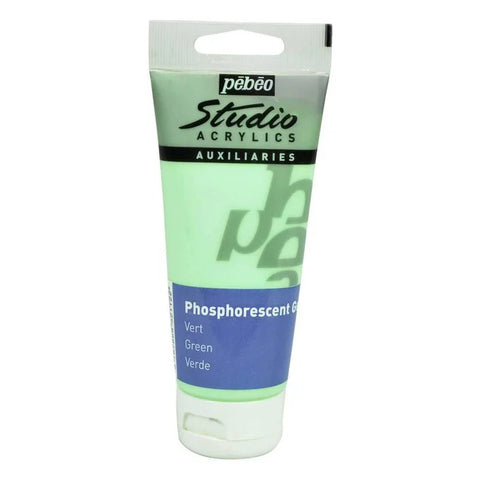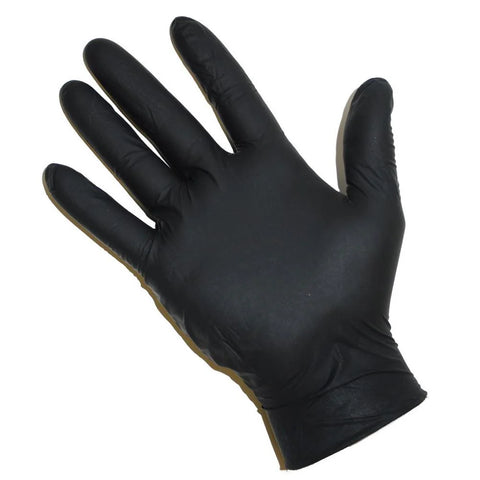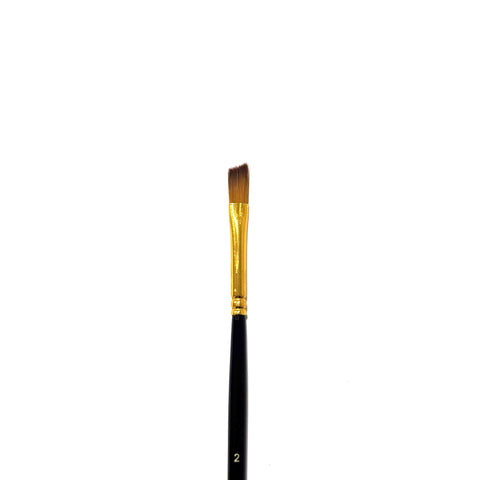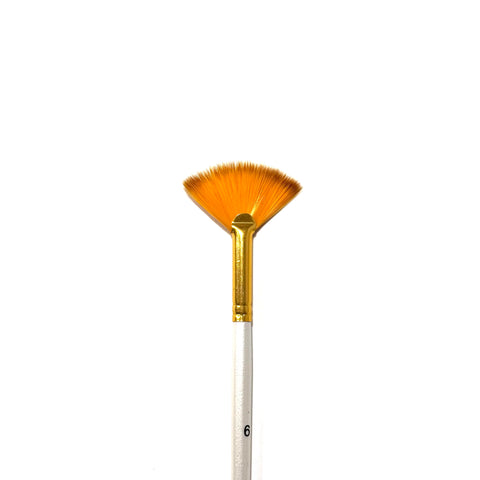
Phosphorus paint green (acrylic) STUDIO ACRYLICS 100 ML PHOSPHORESCENT GEL GREEN - Pebeo
No reviews
Regular price
34.90 GEL
SKU: 832112
ISBN: 3167868321122
Title
Product Description
Discover all the details about this product
All information published on this website, including texts, logos, photos, designs, and any other content, is protected by applicable copyright laws. Any use, copying, distribution, or modification of this content without prior written permission is strictly prohibited.
Pebeo Studio Acrylics Phosphorescent Gel (100 ml, green)
Product Description:
Pebeo Studio Acrylics Phosphorescent Gel is a phosphorescent paint that glows in the dark. Ideal for creative and decorative projects, it will enhance the uniqueness and effectiveness of your works. Its phosphorescent effect is activated upon contact with a light source, creating a sharp, luminous green glow in the dark.
Features and advantages:
-
Luminous effect of phosphorus:
Activated by daylight or artificial light and glows in the dark. -
Green color:
Transparent green in daylight and luminous green in the dark. -
100 ml tube:
Enough capacity for various creative projects. -
High quality:
Can be mixed with other acrylic paints or used alone. -
Safe and non-toxic:
Suitable for both professional and hobby use.
Instructions for use:
-
Prepare the surface:
Make sure the surface is clean and dry. -
Apply phosphor paint:
Apply the gel with a brush or palette knife. -
Charging with light:
Illuminate in daylight or artificial light to activate the luminous effect. -
Use in the dark:
In the dark, the gel will reveal a sharp green glowing effect.
Ideal use:
- Decorative arts
- For creating creative lighting effects
- Night lights and themed decorations
- Decoration of parties and events
Available for pickup at
საბურთალოს ფილიალი
Usually ready in 1 hour
78 პეტრე ქავთარაძის ქუჩა
11:00 - 20:00
0186 თბილისი
Georgia
საწყობი
Usually ready in 1 hour
78 პეტრე ქავთარაძის ქუჩა
11:00 - 20:00
0186 თბილისი
Georgia
Phosphorus paint green (acrylic) STUDIO ACRYLICS 100 ML PHOSPHORESCENT GEL GREEN - Pebeo
-
საბურთალოს ფილიალიAvailable for pickup Usually ready in 1 hour
78 პეტრე ქავთარაძის ქუჩა
11:00 - 20:00
0186 თბილისი
Georgia -
საწყობიAvailable for pickup Usually ready in 1 hour
78 პეტრე ქავთარაძის ქუჩა
11:00 - 20:00
0186 თბილისი
Georgia
🚚 Standard delivery service
Tbilisi
- The delivery fee is determined automatically when you purchase a product on the site. The minimum rate is 5 GEL
- Onway, Delivo courier services work from Monday to Friday. 11:00 - 18:00.
- Orders placed before 15:00 will be delivered on the next working day.
throughout Georgia
- The delivery fee is determined automatically on the site. The minimum tariff is 8 GEL.
- Onway, Delivo courier services work from Monday to Friday. 11:00 - 18:00.
- Delivery in 1-3 working days to any region.
🚕 TAXI - delivery
Pick up
- When ordering, you can choose the Pick up function, in which case you will not have to pay the delivery fee when placing the order. Indicate in the comment that you want TAXI delivery service.
- In 15-20 minutes after placing the order, your order will be prepared at the appropriate branch.
- Contact the branch and send the desired taxi delivery courier to the branch address.
- TAXI delivery is available during branch office hours. 11:00 - 20:00 every day (including Saturday and Sunday)
Discounts in Lumino

Regular priceOn Sale from 1.95 GEL
Black pencil in pieces 5H, 4H, 3H, 2H, H, HB, 2B, 3B, 4B, 5B, 6B, 7B, 8B
On Sale

Regular price
8.95 GEL
Sale price9.90 GEL
თაბაშირის პლასტირები Plaster Cloth Wrap 10cm x 4.5m
On Sale

Regular price
9.00 GEL
Sale price14.90 GEL
ნეონის საღებავი სახის მოსახატი UV Face & Body Paint (PRO), UV Pink, 12ml
On Sale

Regular price
9.00 GEL
Sale price14.90 GEL
ნეონის საღებავი სახის მოსხატი UV Face & Body Paint (PRO), UV Purple, 12ml
On Sale

Regular price
9.00 GEL
Sale price14.90 GEL
Glow In The Dark Face Paint (PRO), UV Yellow, 12ml
On Sale

Regular price
9.00 GEL
Sale price14.90 GEL
სახის მოსახატი მანათობელი საღებავი Glow In The Dark Face Paint (PRO), UV Pink. 12ml
On Sale

Regular price
9.00 GEL
Sale price14.90 GEL
Glow In The Dark Face Paint (PRO), UV Orange, 12m
On Sale

Regular price
12.00 GEL
Sale price18.90 GEL
სახის მოსახატი ნეონის სთიქი UV Paint Stick (PRO), UV Yellow, 3.5g
On Sale

Regular price
12.00 GEL
Sale price18.90 GEL
სახის მოსახატი ნეონის სთიქი UV Paint Stick (PRO), UV Blue, 3.5g
On Sale

Regular price
12.00 GEL
Sale price18.90 GEL
სახის მოსახატი ნეონის სთიქი UV Paint Stick (PRO), UV Red, 3.5g
On Sale

Regular price
12.00 GEL
Sale price18.90 GEL
სახის მოსახატი ნეონის სთიქი UV Paint Stick (PRO), UV Purple, 3.5g
On Sale

Regular price
12.00 GEL
Sale price18.90 GEL
სახის მოსახატი ნეონის სთიქი UV Paint Stick (PRO), UV Pink, 3.5g
On Sale

Regular price
12.00 GEL
Sale price18.90 GEL
სახის მოსახატი ნეონის სთიქი UV Paint Stick (PRO), UV Orange, 3.5g
On Sale

Regular price
16.90 GEL
Sale price31.90 GEL
Hobby knife set of 13 pieces Hobby Knife Set SK5 Blades 13pc
On Sale
ახალი მიღებული

Regular price
36.90 GEL
Leather varnish (protective layer) 110ml matt/satin - Pebeo Setacolor Leather 110ml Matt / Satin Varnish
New

Regular price
21.95 GEL
სინთეთიკური ტილო (Polyester Canvas) 170სმ მეტრაჟით, ხვეულა, რულონი - 1 მეტრი
New

Regular price
16.95 GEL
ბამბის ტილო დაგრუნტული (Pure Cotton) 160სმ მეტრაჟით, ხვეულა, რულონი - 1 მეტრი
New

November 21, 2025
How to start painting glass with Pebeo Vitrail paints – a complete guide for beginners...

November 13, 2025
How to choose a canvas for painting — dimensions, material and practical tips Choosing a...
Fast delivery service
If you want to get your order right away, check taxi delivery rates from frequently used services
საიმედო მიწოდების სერვისი 5.5 ლარიდან
საფოსტო მომსახურების საუკეთესო არჩევანი საქართველოს ქალაქებსა და რეგიონებში
Send a mourning courier to the appropriate branch to pick up the order
The rate is calculated automatically based on your address
The rate depends on the branch you want and your address

























